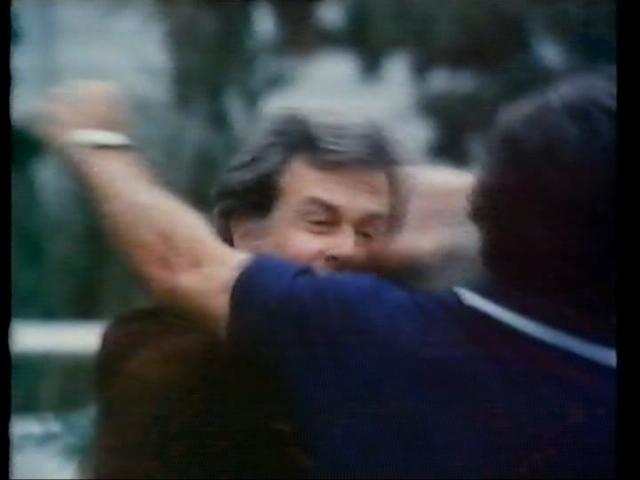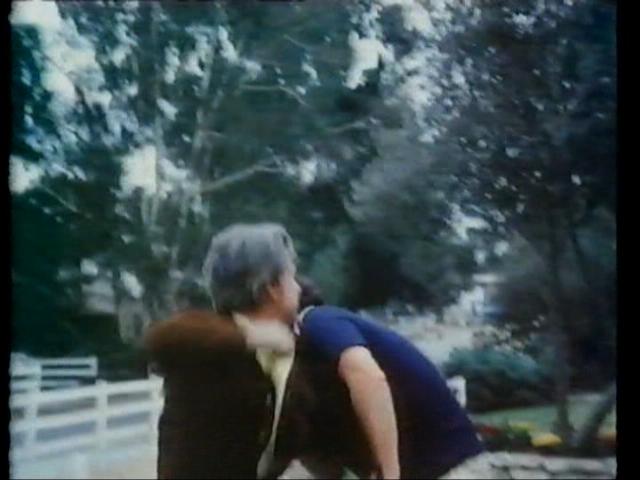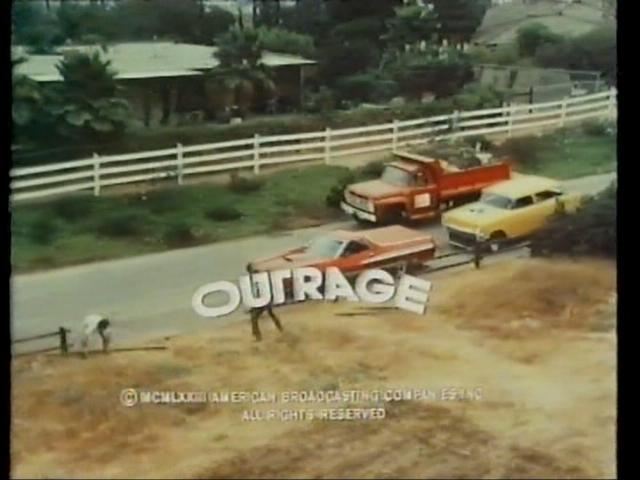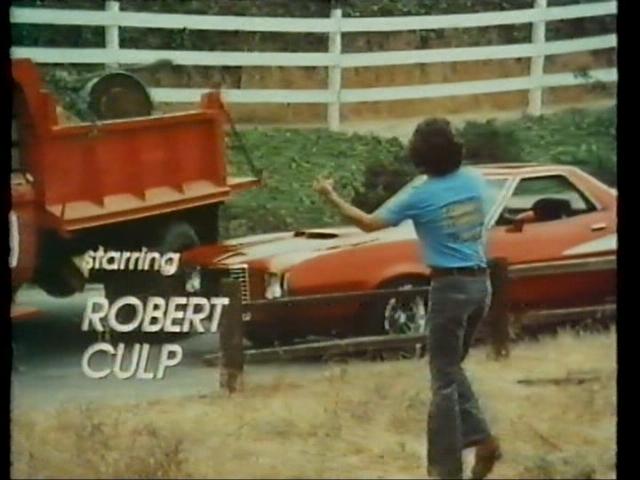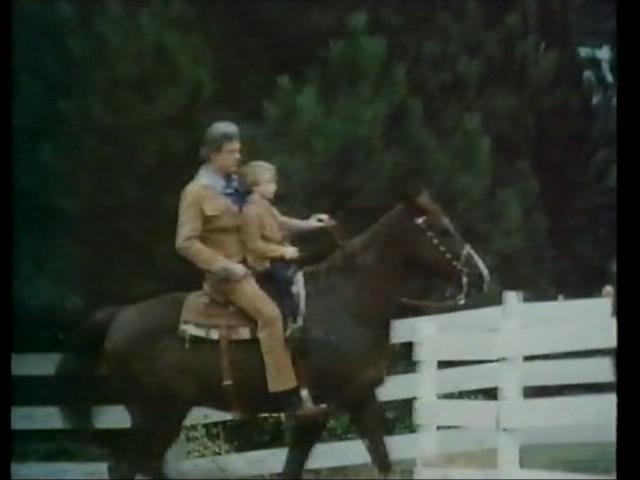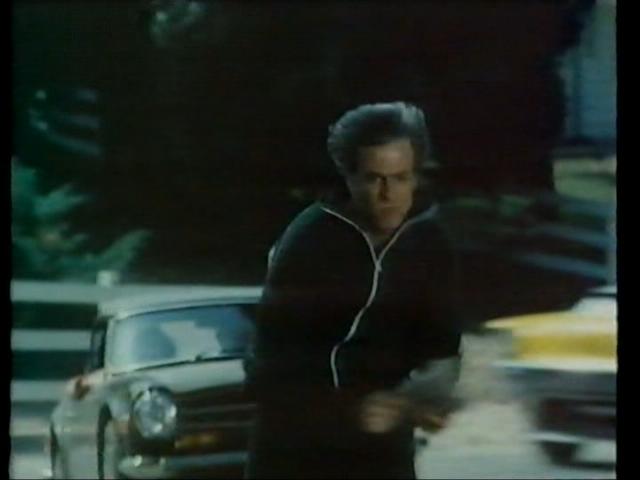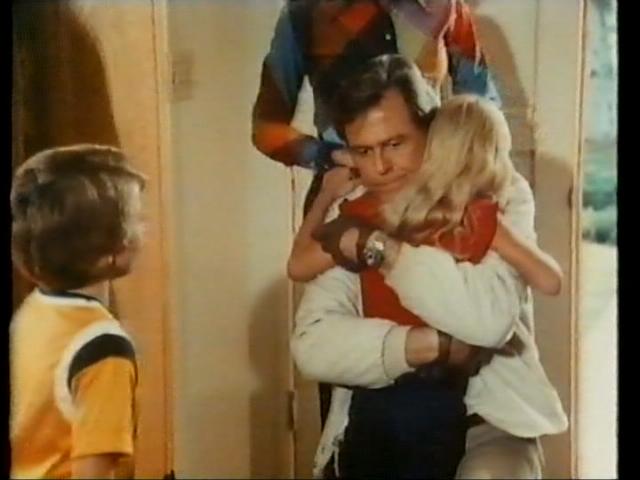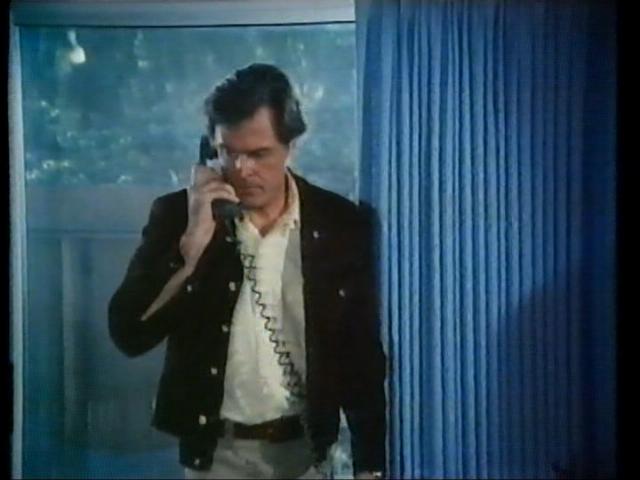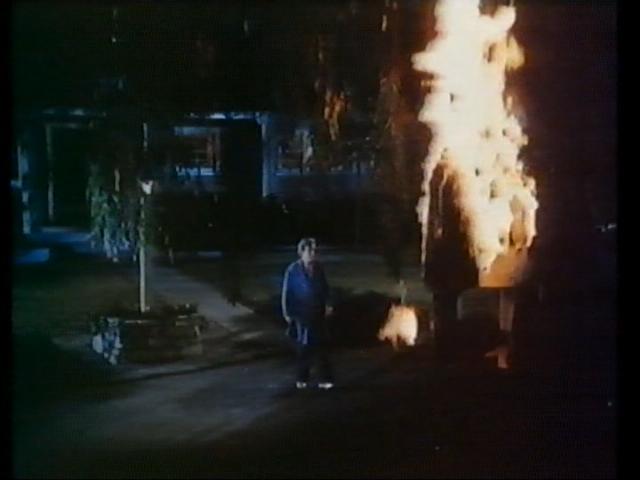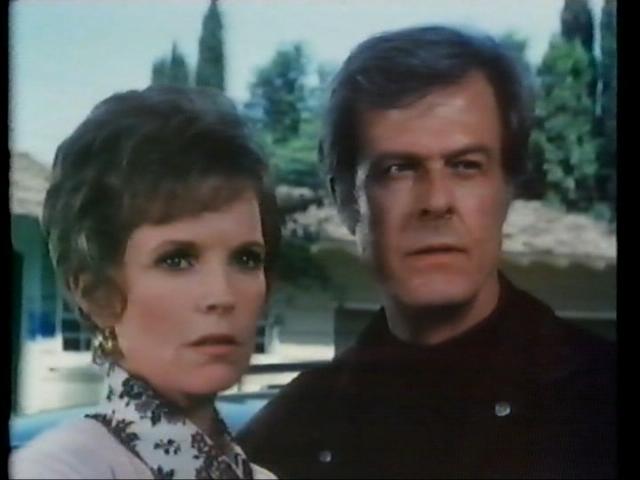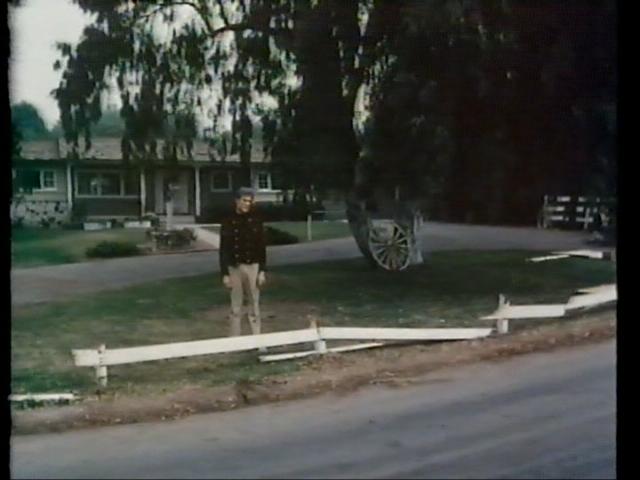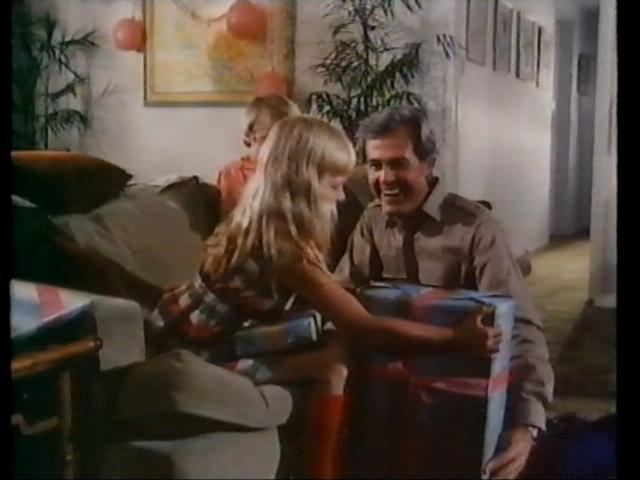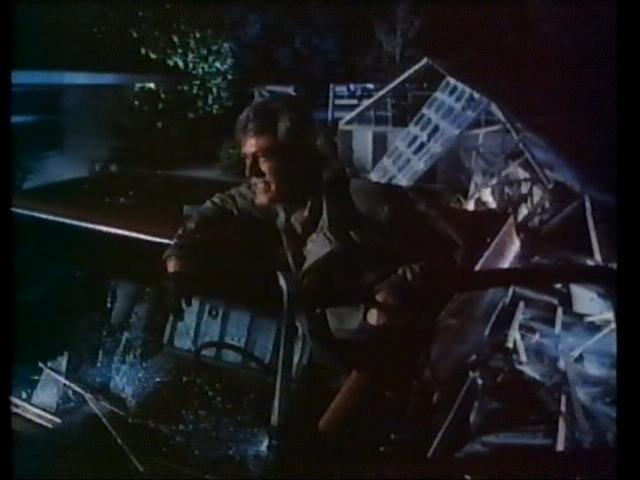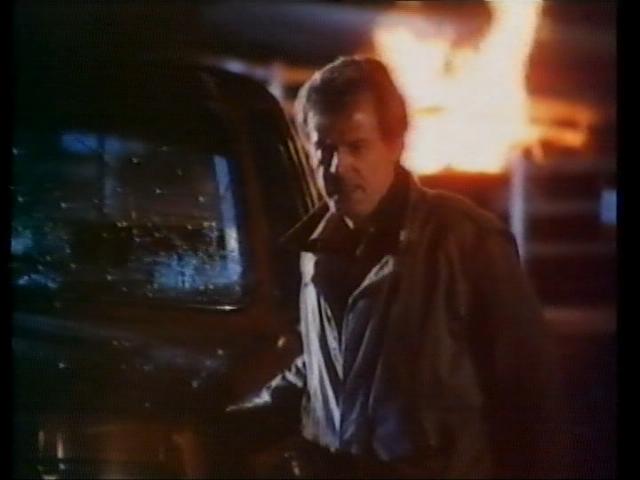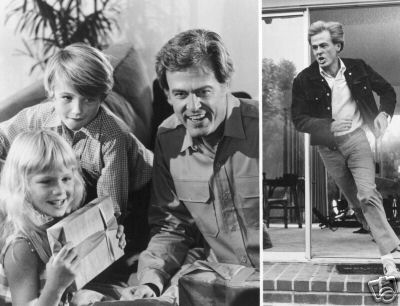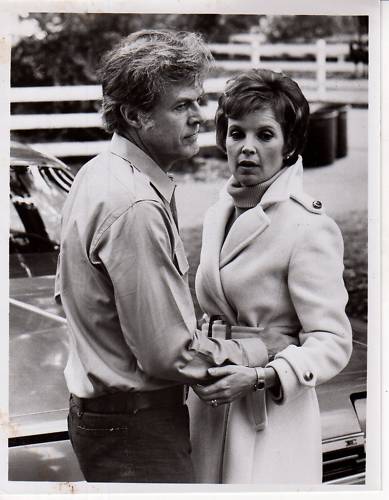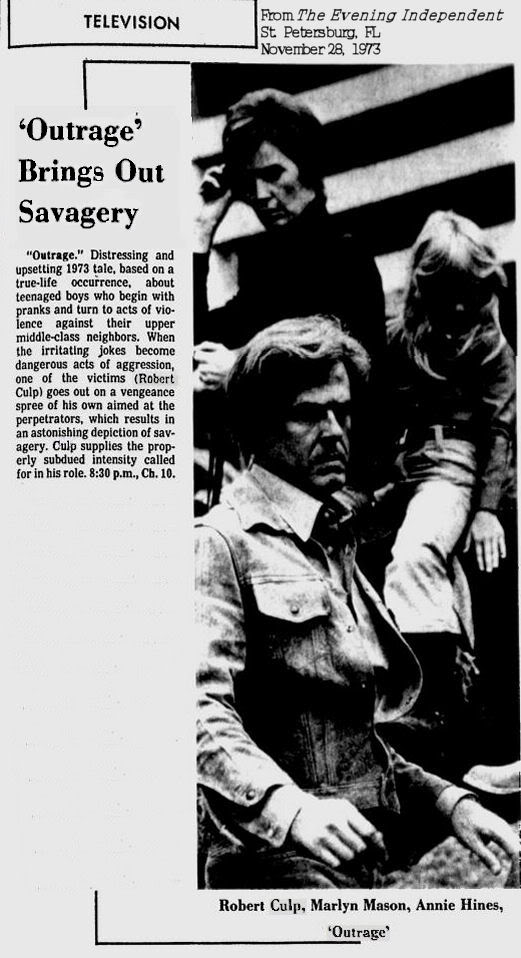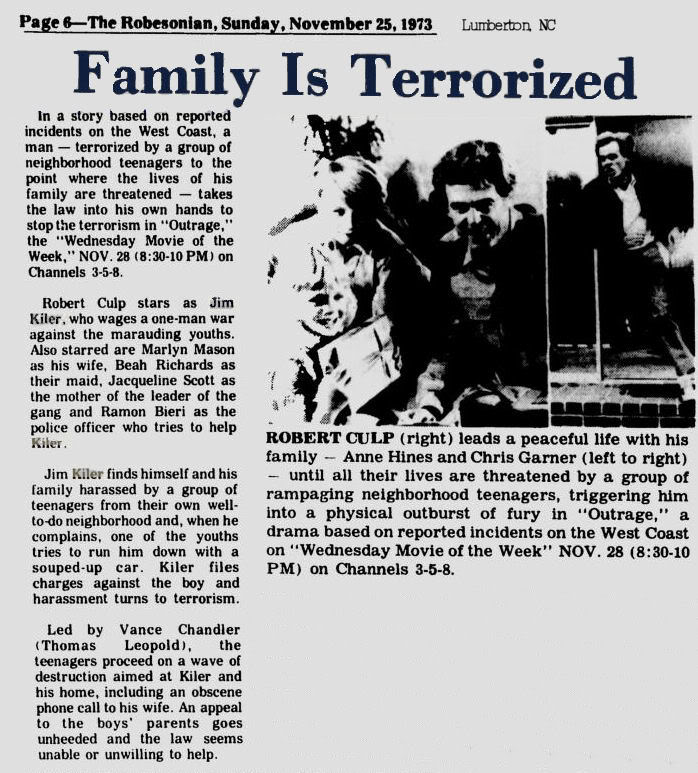According to the IMDB, Robert Culp, who would have turned 85 last month (8/16), did as many TV films (35) as he did theatrical releases (34). I’m still on the hunt for many of his MOTW, but awhile back I polled fans on Facebook as to their favorites. I think I have a respectable Top Ten list of TV movies that, in many cases, are still remembered by viewers to this day.
In order of air date:
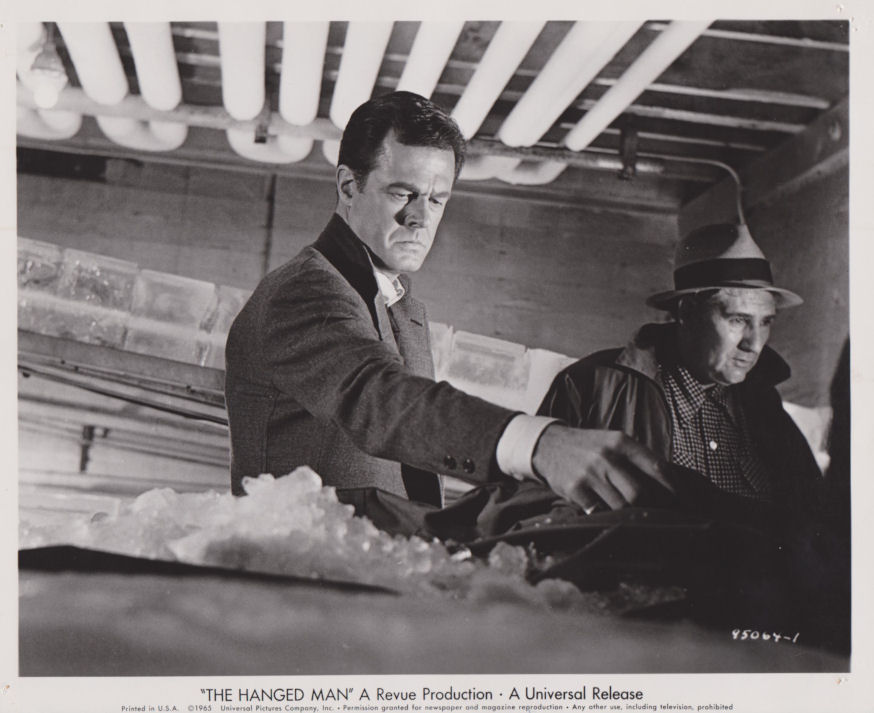 The Hanged Man (1964) – Directed by Don Siegel (Dirty Harry, The Shootist) this was the second TV movie to air and was an adaptation of the 1947 film Ride the Pink Horse. Set in New Orleans during Mardi Gras, Culp is Harry Pace who arrives to find out why a friend was killed and finds himself embroiled in shady union politics. Edmond O’Brien is the union boss with dirty hands, Norman Fell is the cop trying to find out why Pace’s friend was murdered and Vera Miles is the love interest whose allegiance to any man is questionable. Culp’s performance is dark and brooding and through the lies and deceit, the truth he seeks turns out to be more than he bargained for.
The Hanged Man (1964) – Directed by Don Siegel (Dirty Harry, The Shootist) this was the second TV movie to air and was an adaptation of the 1947 film Ride the Pink Horse. Set in New Orleans during Mardi Gras, Culp is Harry Pace who arrives to find out why a friend was killed and finds himself embroiled in shady union politics. Edmond O’Brien is the union boss with dirty hands, Norman Fell is the cop trying to find out why Pace’s friend was murdered and Vera Miles is the love interest whose allegiance to any man is questionable. Culp’s performance is dark and brooding and through the lies and deceit, the truth he seeks turns out to be more than he bargained for.
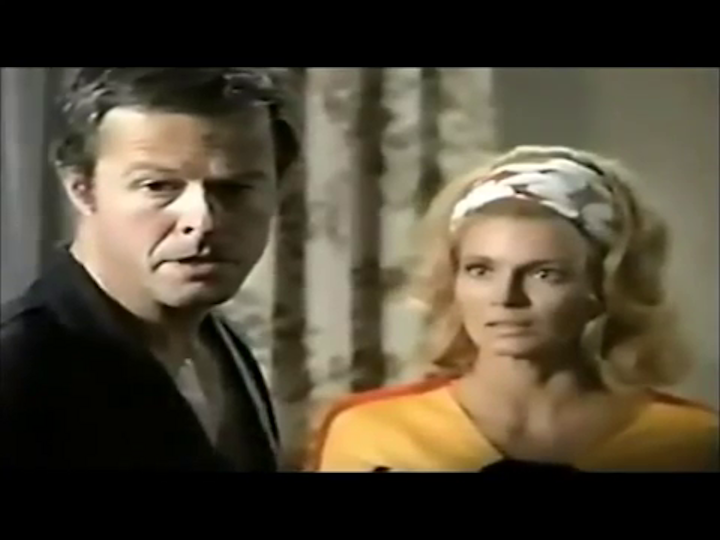 See the Man Run (1971) – Also known as The Second Face, the suspense in this one starts from the get-go and doesn’t let up. Culp is Ben Taylor, an alcoholic out of work actor who has recently moved into a new cheapie apartment with his wife Joanne (Angie Dickinson). Their phone number, previously issued to a Dr. Thomas Spencer (Eddie Albert), is the number a couple of kidnappers dial to say they have his daughter and demand a $50,000 ransom. Culp has no chance to tell them they have the wrong number and after he calls Dr. Spencer and tries to explain what happened, the doctor thinks he is the kidnapper. Caught in the middle and egged on by his wife, Culp runs the dangerous game of go between with the doctor and the real kidnappers for the chance at $150,000. Watching Culp switch roles from cool, threatening kidnapper to trembling victim to mere actor trying keep his wits about him is enough to induce schizophrenia. Angie Dickinson is great as she gets consumed with greed and the twist ending – you’ll never see it coming.
See the Man Run (1971) – Also known as The Second Face, the suspense in this one starts from the get-go and doesn’t let up. Culp is Ben Taylor, an alcoholic out of work actor who has recently moved into a new cheapie apartment with his wife Joanne (Angie Dickinson). Their phone number, previously issued to a Dr. Thomas Spencer (Eddie Albert), is the number a couple of kidnappers dial to say they have his daughter and demand a $50,000 ransom. Culp has no chance to tell them they have the wrong number and after he calls Dr. Spencer and tries to explain what happened, the doctor thinks he is the kidnapper. Caught in the middle and egged on by his wife, Culp runs the dangerous game of go between with the doctor and the real kidnappers for the chance at $150,000. Watching Culp switch roles from cool, threatening kidnapper to trembling victim to mere actor trying keep his wits about him is enough to induce schizophrenia. Angie Dickinson is great as she gets consumed with greed and the twist ending – you’ll never see it coming.
 A Cold Night’s Death (1973) – I’m including this one because it seems to be on other people’s top list but here’s the thing: I haven’t watched it yet. I got as far into it as when the helicopter pilot is showing Culp and Eli Wallach around the lab, which is located on some godforsaken frozen mountain, and he shows them the part of the lab with the big vats that hold snow to melt to use for drinking water and I had this awful vision. I won’t share it but since I live in a place that has winters that look like where this laboratory was located, I haven’t had the hot foot to go back to it.
A Cold Night’s Death (1973) – I’m including this one because it seems to be on other people’s top list but here’s the thing: I haven’t watched it yet. I got as far into it as when the helicopter pilot is showing Culp and Eli Wallach around the lab, which is located on some godforsaken frozen mountain, and he shows them the part of the lab with the big vats that hold snow to melt to use for drinking water and I had this awful vision. I won’t share it but since I live in a place that has winters that look like where this laboratory was located, I haven’t had the hot foot to go back to it.
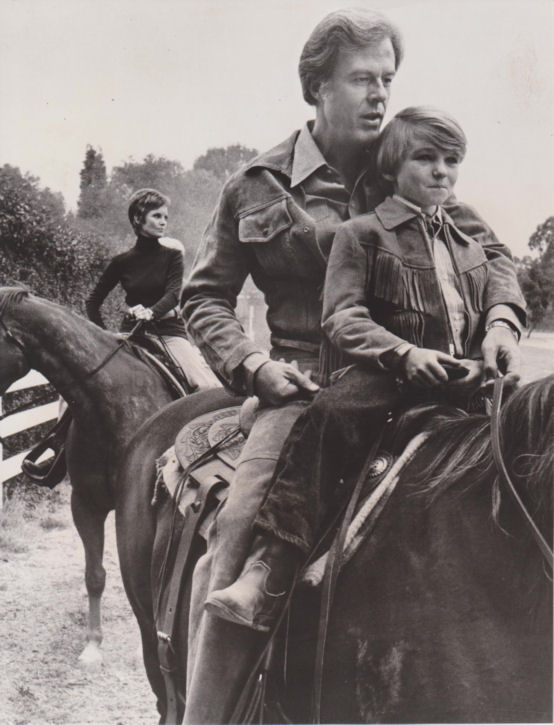 Outrage (1973) – Apparently based on true events, Culp is Dr. Jim Kiler, a veterinarian and family man, living in a gated community somewhere in California. The spoiled rich kids in the neighborhood enjoy raising a ruckus and go hot rodding around in their cars, risking life and limb to anyone who is out on the sidewalk or in the street. Kiler petitions to have speed bumps put in the neighborhood and after becomes the target of the punks and their escalating antics. The basic story line of the gentle man pushed too far, anyone who has seen Culp in his Columbo episodes will recognize the contained simmering anger in this one that builds up to a violent and, let’s face it, satisfying vigilante outburst at the end.
Outrage (1973) – Apparently based on true events, Culp is Dr. Jim Kiler, a veterinarian and family man, living in a gated community somewhere in California. The spoiled rich kids in the neighborhood enjoy raising a ruckus and go hot rodding around in their cars, risking life and limb to anyone who is out on the sidewalk or in the street. Kiler petitions to have speed bumps put in the neighborhood and after becomes the target of the punks and their escalating antics. The basic story line of the gentle man pushed too far, anyone who has seen Culp in his Columbo episodes will recognize the contained simmering anger in this one that builds up to a violent and, let’s face it, satisfying vigilante outburst at the end.
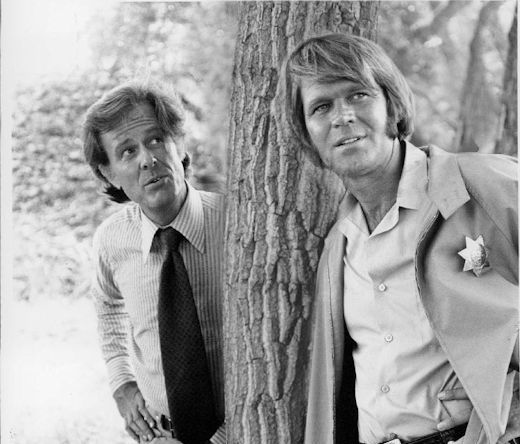 Strange Homecoming (1974) – Culp plays Jack Halsey, who left his small town 18 years earlier and sends postcards back home to his brother, Bill (Glen Campbell), from all these exotic locations all over the world where he does “business.” His business, however, is that of a jewel thief and while in Hawaii Jack adds murder to his resume. On the run from the law, he returns home to the surprise of his family and old friends, who are oblivious to his true trade. Campbell, who’s also sheriff of the town, starts to become suspicious of his brother. Culp is cool yet wild eyed and creepy in this one, having an especially awkward moment involving a pair of ladies nylon stockings (causing him to flashback to the murder in Hawaii). When the brothers finally clash, only one will win and the ending may surprise you a little.
Strange Homecoming (1974) – Culp plays Jack Halsey, who left his small town 18 years earlier and sends postcards back home to his brother, Bill (Glen Campbell), from all these exotic locations all over the world where he does “business.” His business, however, is that of a jewel thief and while in Hawaii Jack adds murder to his resume. On the run from the law, he returns home to the surprise of his family and old friends, who are oblivious to his true trade. Campbell, who’s also sheriff of the town, starts to become suspicious of his brother. Culp is cool yet wild eyed and creepy in this one, having an especially awkward moment involving a pair of ladies nylon stockings (causing him to flashback to the murder in Hawaii). When the brothers finally clash, only one will win and the ending may surprise you a little.
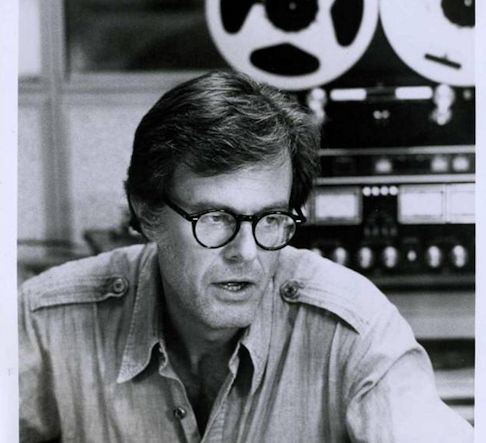 A Cry for Help (1975) – Culp channels his inner Don Imus in this one as a caustic talk radio host, Harry Freeman, who indulges in diatribes and insults his listeners for sport during the morning commute. When a young girl phones in saying she’s going to commit suicide, he blows her off, jokingly asking where she was and that he would join her. When his listeners start phoning in and taking him to point, including a psychologist, Culp scrambles to try to locate the girl via his listeners to stop her from going through with it. The best part of this is watching Culp turn from caustic to caring and seeing the humanity in the character come through…even though he masks it and denies it.
A Cry for Help (1975) – Culp channels his inner Don Imus in this one as a caustic talk radio host, Harry Freeman, who indulges in diatribes and insults his listeners for sport during the morning commute. When a young girl phones in saying she’s going to commit suicide, he blows her off, jokingly asking where she was and that he would join her. When his listeners start phoning in and taking him to point, including a psychologist, Culp scrambles to try to locate the girl via his listeners to stop her from going through with it. The best part of this is watching Culp turn from caustic to caring and seeing the humanity in the character come through…even though he masks it and denies it.
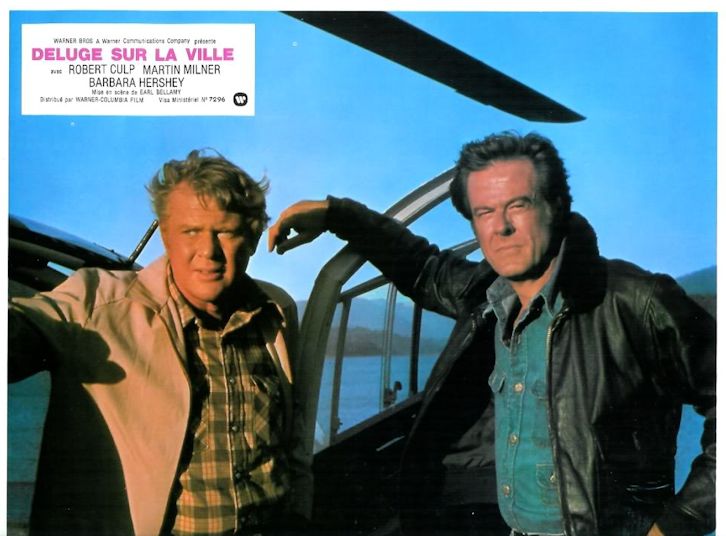 Flood! (1976) – Master of Disaster Irwin Allen (The Poseidon Adventure, The Towering Inferno) brings big screen disaster to the small screen with the story of a rain swollen lake, an earthen dam that can’t hold it back much longer and the small town of Brownsville that stands to be washed away when the dam breaks. Culp is helicopter pilot Steve Brannigan who ferries high paying clients back and forth to fishing cabins at the lake. After seeing the water level at the dam, along with a fresh leak, he tells fellow pilot and friend Paul Burke (Martin Milner) who tries to get the mayor and town council to consent to opening the dam to relieve the pressure. They won’t because it will ruin the fishing, thus ruin the tourism…which apparently is more important than, say, preventing the whole town from wiped out by the flood from the busted dam, which is exactly what happens (how’s the fishing now?!). Culp assists in rescue efforts with his bird and looks really good doing it, just saying!
Flood! (1976) – Master of Disaster Irwin Allen (The Poseidon Adventure, The Towering Inferno) brings big screen disaster to the small screen with the story of a rain swollen lake, an earthen dam that can’t hold it back much longer and the small town of Brownsville that stands to be washed away when the dam breaks. Culp is helicopter pilot Steve Brannigan who ferries high paying clients back and forth to fishing cabins at the lake. After seeing the water level at the dam, along with a fresh leak, he tells fellow pilot and friend Paul Burke (Martin Milner) who tries to get the mayor and town council to consent to opening the dam to relieve the pressure. They won’t because it will ruin the fishing, thus ruin the tourism…which apparently is more important than, say, preventing the whole town from wiped out by the flood from the busted dam, which is exactly what happens (how’s the fishing now?!). Culp assists in rescue efforts with his bird and looks really good doing it, just saying!
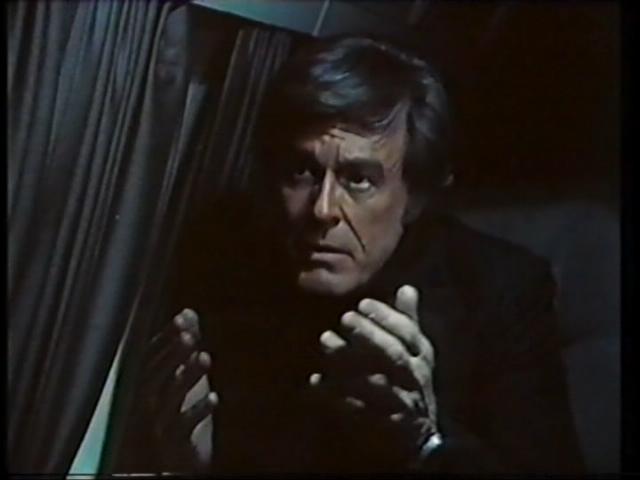 Spectre (1977) – Originally pitched as a pilot for a potential series created by Gene Roddenberry, Culp plays William Sebastian a renowned criminologist and dabbler in the occult. With his partner, Dr. Hamilton (Gig Young), the two are a modern day Holmes and Watson. They travel to England at the request of Anitra Cyon, who believes her brother Jeffrey has come under the influence of some kind of evil. All the Culp coolness you love is here along with a good mystery and very well done production.
Spectre (1977) – Originally pitched as a pilot for a potential series created by Gene Roddenberry, Culp plays William Sebastian a renowned criminologist and dabbler in the occult. With his partner, Dr. Hamilton (Gig Young), the two are a modern day Holmes and Watson. They travel to England at the request of Anitra Cyon, who believes her brother Jeffrey has come under the influence of some kind of evil. All the Culp coolness you love is here along with a good mystery and very well done production.
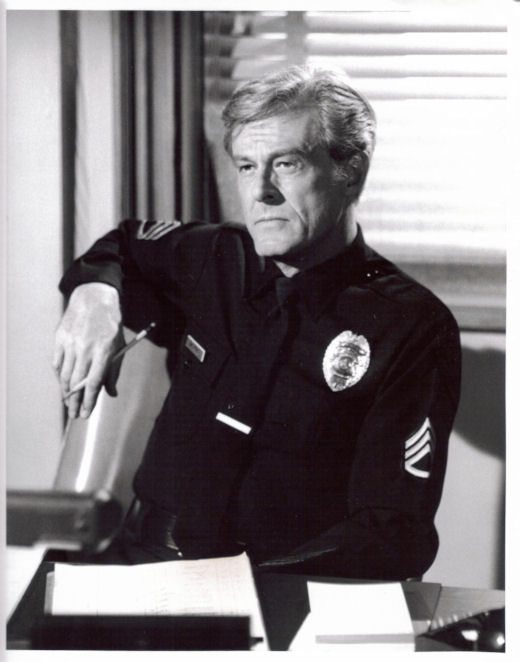 Last of the Good Guys (1978) – Culp once said in an interview that the earliest incarnation of “Maxwell” was in this, where he plays a tough, calcified, by-the-book (sound familiar?) police sergeant named Nichols that oversees a misfit squad of cops (including Dennis Dugan, Ji-tu Cumbuka, James Hong and Hampton Francher). When veteran cop Frank O’Malley (Larry Hagman) dies just days from retirement, the younger cops plot to manipulate Nichols by covering for O’Malley at roll call until his retirement date, so that his widow and kids can receive his pension. Nichols catches on to the ploy and after Officer Lucas (Dugan) attempts a last minute desperate shakedown on Nichols involving a “breach of promise” with a young blind girl, it comes down to whether the tough as nails Nichols sticks with the book regarding O’Malley’s pension or not.
Last of the Good Guys (1978) – Culp once said in an interview that the earliest incarnation of “Maxwell” was in this, where he plays a tough, calcified, by-the-book (sound familiar?) police sergeant named Nichols that oversees a misfit squad of cops (including Dennis Dugan, Ji-tu Cumbuka, James Hong and Hampton Francher). When veteran cop Frank O’Malley (Larry Hagman) dies just days from retirement, the younger cops plot to manipulate Nichols by covering for O’Malley at roll call until his retirement date, so that his widow and kids can receive his pension. Nichols catches on to the ploy and after Officer Lucas (Dugan) attempts a last minute desperate shakedown on Nichols involving a “breach of promise” with a young blind girl, it comes down to whether the tough as nails Nichols sticks with the book regarding O’Malley’s pension or not.
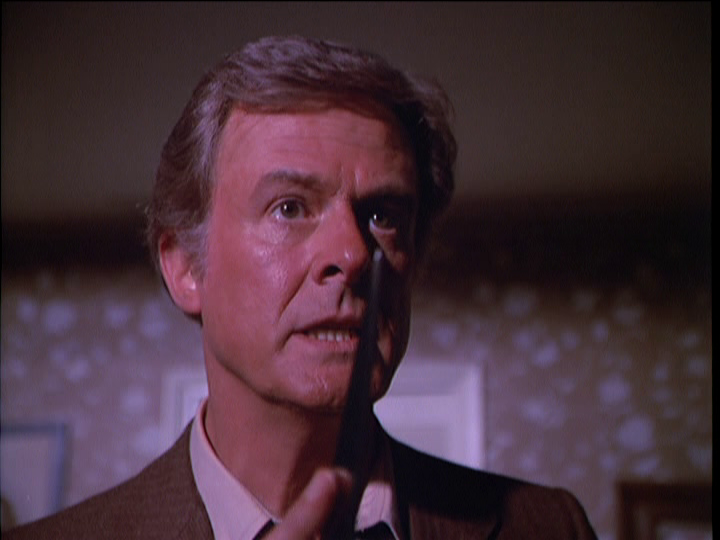 Killjoy (1981) – A murder mystery so damn convoluted you’re not sure who really died and who really did it until the very end. Culp is Lou Corbin, a cop and also a suspicious character in his own right, who knew the victim, Joy Morgan, and is trying to find out who killed her. A tip of the hat to Columbo with a touch of Maxwell with a bent, Corbin shows up on people’s door steps, pops in on them when they least expect it (especially when they go rummaging through the victim’s house) and essentially pesters everybody (just like Columbo!) but never lets on that he’s a cop until the end.
Killjoy (1981) – A murder mystery so damn convoluted you’re not sure who really died and who really did it until the very end. Culp is Lou Corbin, a cop and also a suspicious character in his own right, who knew the victim, Joy Morgan, and is trying to find out who killed her. A tip of the hat to Columbo with a touch of Maxwell with a bent, Corbin shows up on people’s door steps, pops in on them when they least expect it (especially when they go rummaging through the victim’s house) and essentially pesters everybody (just like Columbo!) but never lets on that he’s a cop until the end.
Honorable Mentions:
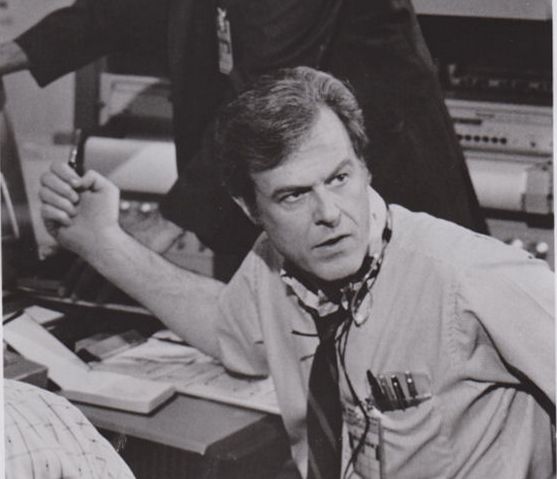 Houston, We’ve Got a Problem (1974) – Dramatization of the 1970 Apollo 13 crisis, only this one focused on the lives of the men who were on the ground at Houston Mission Control, having to work to figure out how to get the crippled space craft back to Earth and back to safety. Culp is Retro Officer Steve Bell, who suffers from a deteriorating heart condition that will essentially end his career if not his life before Apollo 13 makes it back to earth. Not knowing if the lunar module itself is damaged, Culp must figure a point of re-entry and calculate coordinates to bring the module safely back through Earth’s atmosphere. The other story lines run more melodramatic and the film was criticized at the time for being so (and for being overly fictionalized) but if you’re a Culp fan his performance alone is worth the watch.
Houston, We’ve Got a Problem (1974) – Dramatization of the 1970 Apollo 13 crisis, only this one focused on the lives of the men who were on the ground at Houston Mission Control, having to work to figure out how to get the crippled space craft back to Earth and back to safety. Culp is Retro Officer Steve Bell, who suffers from a deteriorating heart condition that will essentially end his career if not his life before Apollo 13 makes it back to earth. Not knowing if the lunar module itself is damaged, Culp must figure a point of re-entry and calculate coordinates to bring the module safely back through Earth’s atmosphere. The other story lines run more melodramatic and the film was criticized at the time for being so (and for being overly fictionalized) but if you’re a Culp fan his performance alone is worth the watch.
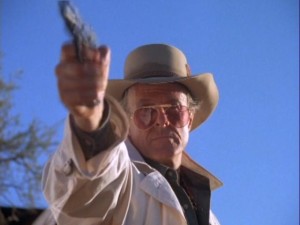 The Blue Lightning (1986) – Although he opens the movie, there’s not enough of Culp in this one, plain and simple. Culp is ex-IRA bomber and cutthroat criminal Lester McInally (complete with Irish brogue) operating in the Australian outback when he goes up against private investigator Harry Wingate (Sam Elliot) who is attempting to retrieve a priceless opal from him. The film is non-stop action and only slows down enough when Elliot takes a bullet in the lung from Culp (ha!). Character development is sparse but the Australian scenery is magnificent. I would have liked to have seen a scene showing Culp overseeing his den of debauchery at McInally’s Casino, ordering thugs around and all but, alas.
The Blue Lightning (1986) – Although he opens the movie, there’s not enough of Culp in this one, plain and simple. Culp is ex-IRA bomber and cutthroat criminal Lester McInally (complete with Irish brogue) operating in the Australian outback when he goes up against private investigator Harry Wingate (Sam Elliot) who is attempting to retrieve a priceless opal from him. The film is non-stop action and only slows down enough when Elliot takes a bullet in the lung from Culp (ha!). Character development is sparse but the Australian scenery is magnificent. I would have liked to have seen a scene showing Culp overseeing his den of debauchery at McInally’s Casino, ordering thugs around and all but, alas.
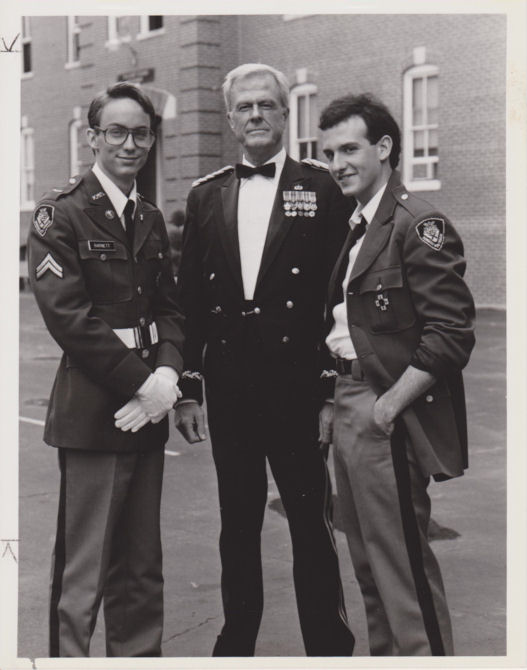 Combat High (aka, Combat Academy) (1986) – Military academy version of “Police Academy” (produced by the same people) Culp is in the Commandant Lassard role here (although not as air headed), as the head of a military academy. When two punk kids (Keith Gordon, Wallace Langham) are sent to his school, they turn it and him upside down. Culp suffers the typical sophomoric indignities in this one, including the entire dining table being upended on him in the mess hall dumping just about everything all over his uniform and his office is sabotaged six ways from Sunday. A young George Clooney plays Culp’s son and there’s a subplot involving the strained father/son relationship. The film is loaded with noted guest stars including Jamie Farr (actually in a uniform as opposed to his typical “dress” on MASH), Bernie Koppell, John Ratzenburger, Richard Moll, Dick Van Patten and Sherman Hemsley.
Combat High (aka, Combat Academy) (1986) – Military academy version of “Police Academy” (produced by the same people) Culp is in the Commandant Lassard role here (although not as air headed), as the head of a military academy. When two punk kids (Keith Gordon, Wallace Langham) are sent to his school, they turn it and him upside down. Culp suffers the typical sophomoric indignities in this one, including the entire dining table being upended on him in the mess hall dumping just about everything all over his uniform and his office is sabotaged six ways from Sunday. A young George Clooney plays Culp’s son and there’s a subplot involving the strained father/son relationship. The film is loaded with noted guest stars including Jamie Farr (actually in a uniform as opposed to his typical “dress” on MASH), Bernie Koppell, John Ratzenburger, Richard Moll, Dick Van Patten and Sherman Hemsley.
Is there a MOTW you think should have been on this list? Let me know in the comments below!
~Lisa Philbrick
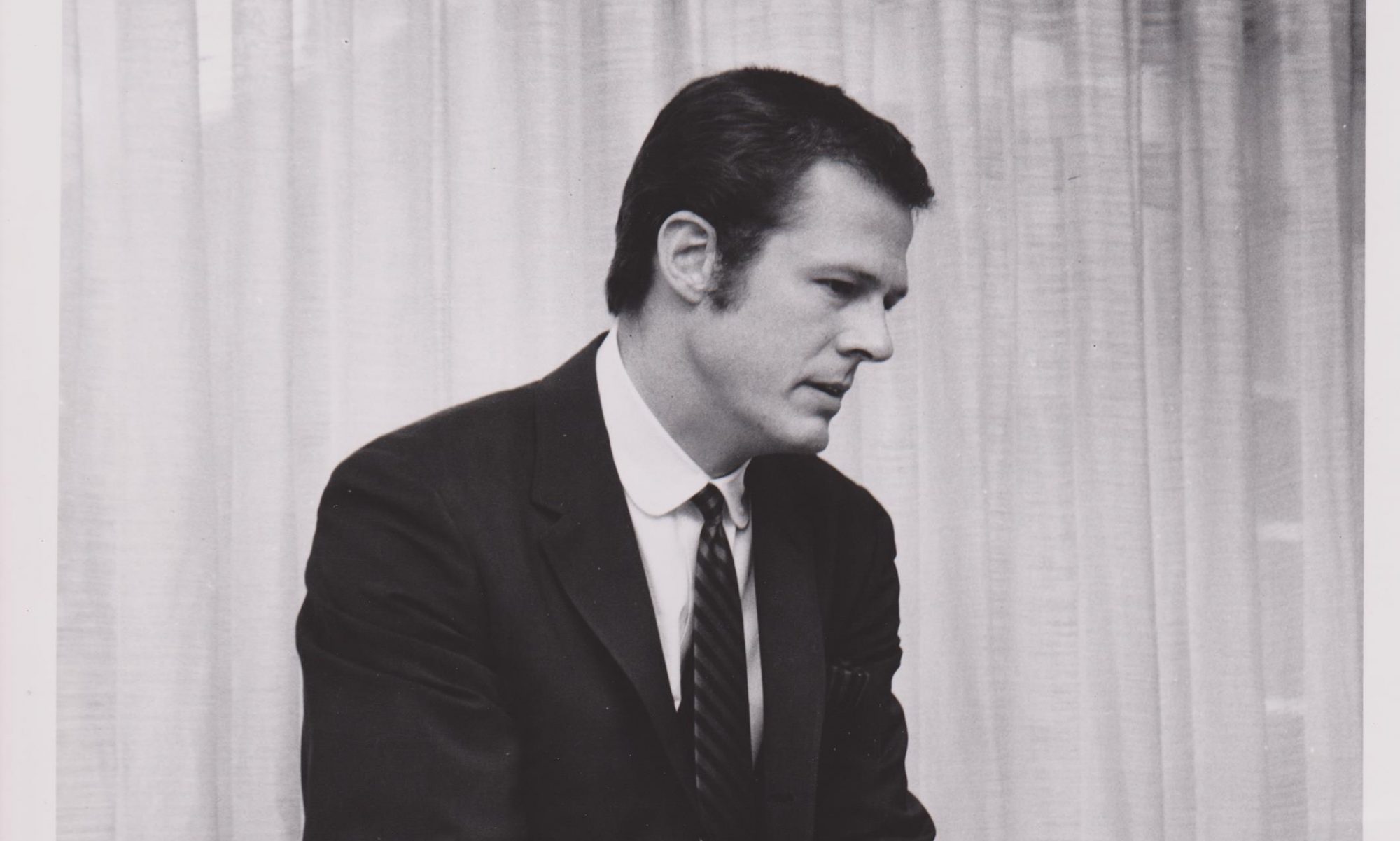
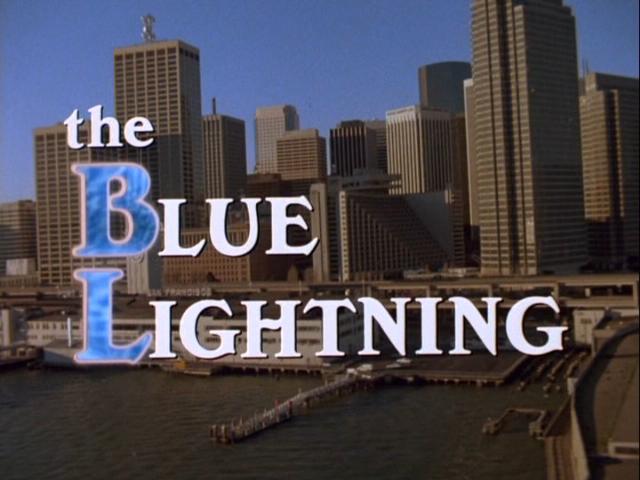
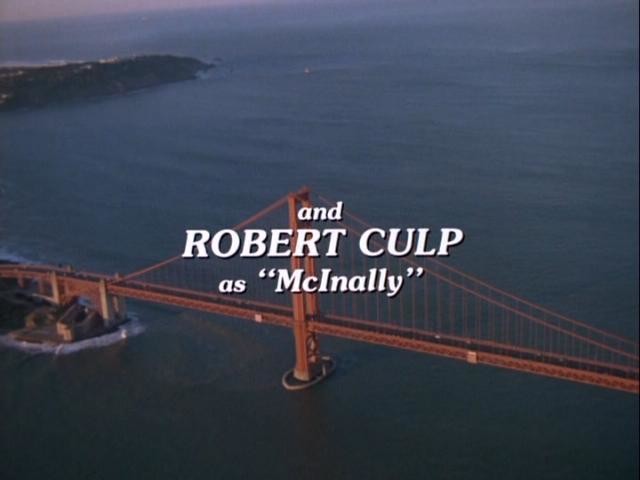

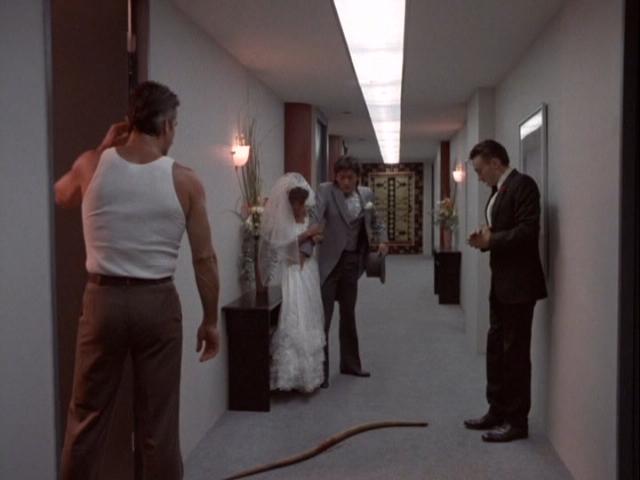 Good thing he got the gun first because he uses it to cut the snake in half. He then dumps it outside his hotel room, just as a bride and groom are going by. (Hopefully that didn’t bode badly for their future together.)
Good thing he got the gun first because he uses it to cut the snake in half. He then dumps it outside his hotel room, just as a bride and groom are going by. (Hopefully that didn’t bode badly for their future together.)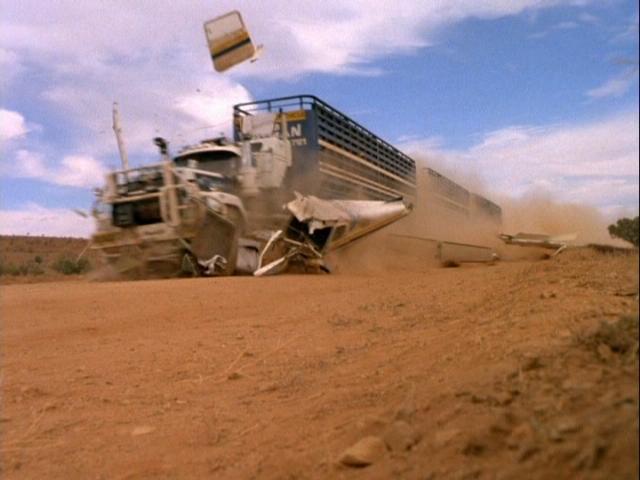 The hired guns keep looking to see where the plane went down. Harry and Kate catch their breath near a tree not far from the road they landed on. Unfortunately, a huge truck comes along and smashes their plane to pieces. The driver is horrified thinking he had killed someone. He finds Harry and Kate are fine just as the hired guns show up in their plane. Everybody jumps into the cab of the truck and they take off, with the plane chasing after them and shooting.
The hired guns keep looking to see where the plane went down. Harry and Kate catch their breath near a tree not far from the road they landed on. Unfortunately, a huge truck comes along and smashes their plane to pieces. The driver is horrified thinking he had killed someone. He finds Harry and Kate are fine just as the hired guns show up in their plane. Everybody jumps into the cab of the truck and they take off, with the plane chasing after them and shooting.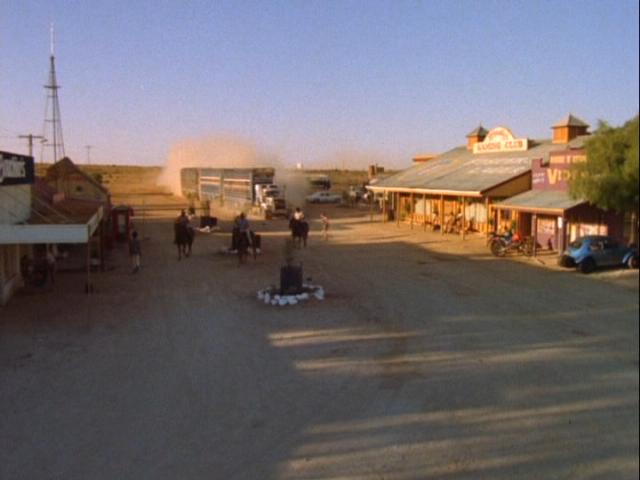 They continue on to Opal Ridge without incident and the truck driver drops them off. He wishes them luck in their going up against McInally, who is hated with a passion apparently all over Australia (and the British government couldn’t find him?). Opal Ridge, one should note, is a town out in the middle of nowhere in the Australian Outback. Think of the old west towns, add a little more color, some cars along with horses and a video arcade. Yer there.
They continue on to Opal Ridge without incident and the truck driver drops them off. He wishes them luck in their going up against McInally, who is hated with a passion apparently all over Australia (and the British government couldn’t find him?). Opal Ridge, one should note, is a town out in the middle of nowhere in the Australian Outback. Think of the old west towns, add a little more color, some cars along with horses and a video arcade. Yer there.
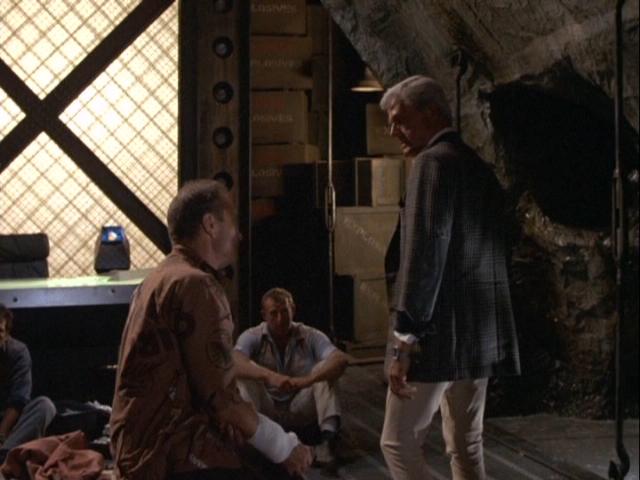



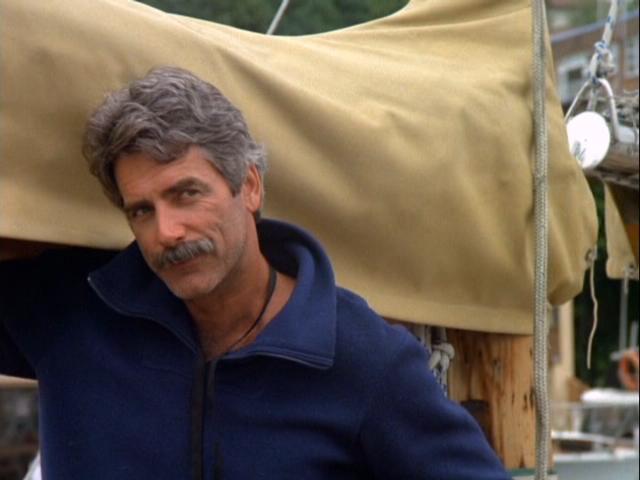
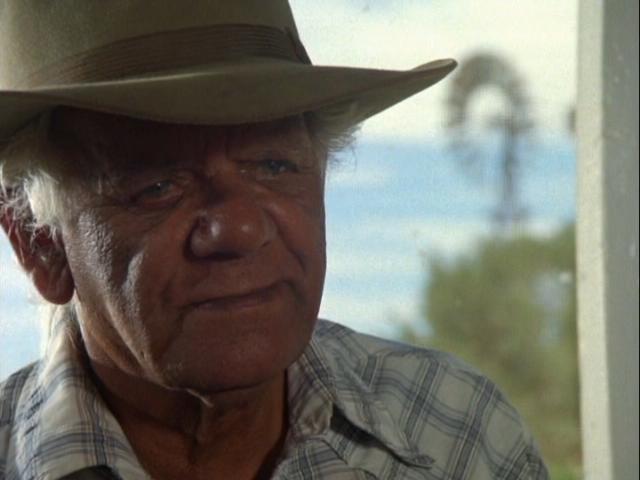
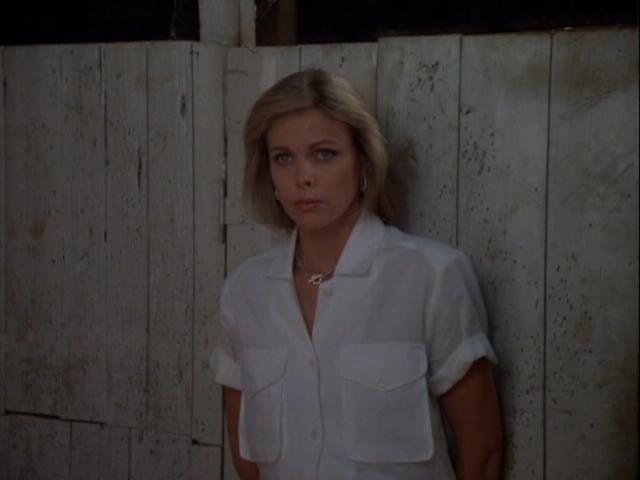


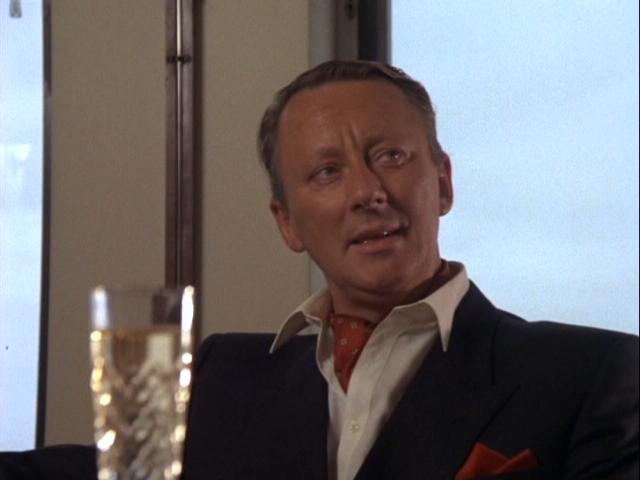 Although he only had one scene, Max Phipps’s Brutus Cathcart was memorable enough. Phipps career spanned theatre, film and television in Australia. He played Dr. Frank-n-Furter in the Australian production of The Rocky Horror Picture Show and played “The Toadie” in the second Mad Max film (The Road Warrior) where he loses a few digits trying to catch a particularly sharp boomerang.
Although he only had one scene, Max Phipps’s Brutus Cathcart was memorable enough. Phipps career spanned theatre, film and television in Australia. He played Dr. Frank-n-Furter in the Australian production of The Rocky Horror Picture Show and played “The Toadie” in the second Mad Max film (The Road Warrior) where he loses a few digits trying to catch a particularly sharp boomerang.
